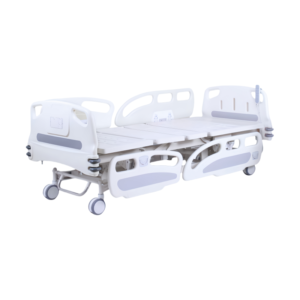In today’s healthcare landscape, electric nursing beds have become increasingly common alongside standard hospital beds. These innovative beds not only enhance patient comfort but also significantly improve caregiver efficiency. This article provides an in-depth comparison of electric nursing beds and standard hospital beds, highlighting their unique features and advantages.
Historical Development of Hospital Beds
Historically, hospital beds were simple steel constructions. To prevent patients from accidentally falling out, caregivers would often use blankets and cushions to create barriers. Over time, guardrails were added to address safety concerns, providing patients with more security. As the understanding of patient needs evolved, manual hospital beds with cranks became prevalent, allowing for adjustments in position. However, the introduction of electric nursing beds has revolutionized patient care by offering effortless adjustments through electronic controls.

Key Differences Between Electric Nursing Beds and Standard Hospital Beds
- Safety Features:
- Electric Nursing Beds: Equipped with sturdy guardrails that can be easily raised or lowered to ensure patient safety. These beds often include built-in safety mechanisms that prevent accidental adjustments during use.
- Standard Hospital Beds: While they may have guardrails, these are often manual and less flexible, requiring caregivers to make physical adjustments, which can be cumbersome.
- Ease of Use:
- Electric Nursing Beds: Feature user-friendly controls that allow caregivers to adjust the bed’s position with minimal effort. This is especially beneficial for patients who require frequent repositioning.
- Standard Hospital Beds: Require manual effort to adjust the bed, which can be labor-intensive and time-consuming, especially for patients with limited mobility.
- Adjustability:
- Electric Nursing Beds: Offer multiple adjustments for the head, legs, and overall height, allowing for customized positioning to enhance patient comfort and care.
- Standard Hospital Beds: Typically provide limited adjustments, often only for the head and legs, making it challenging to find the most comfortable position for each patient.
- Additional Features:
- Electric Nursing Beds: Can include integrated dining tables, IV poles, and even specialized toilet devices, offering a comprehensive solution for patient care within the bed itself.
- Standard Hospital Beds: Generally lack such integrated features, requiring separate equipment for dining or toileting needs.
- Durability and Design:
- Electric Nursing Beds: Constructed from high-strength materials with advanced welding techniques, these beds are designed for long-term use. Their rust-resistant coatings ensure durability and easy maintenance.
- Standard Hospital Beds: While functional, they may not offer the same level of durability or aesthetic appeal, often looking more clinical and less inviting.
- Versatility:
- Electric Nursing Beds: Their elegant design allows them to blend seamlessly into home environments, functioning as regular beds when not used for medical purposes.
- Standard Hospital Beds: Often lack the aesthetic appeal required for residential use, making them less suitable for non-medical settings.
Conclusion
Electric nursing beds provide a superior alternative to standard hospital beds, particularly for patients requiring specialized care. Their advanced safety features, ease of use, extensive adjustability, and added functionalities make them indispensable in modern healthcare. As hospitals and home care facilities strive to enhance patient comfort and caregiver efficiency, the adoption of electric nursing beds is likely to continue growing, ultimately leading to better patient outcomes and overall satisfaction.
